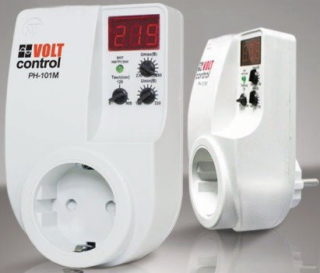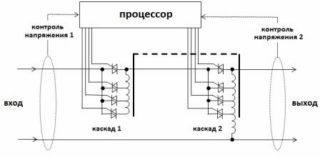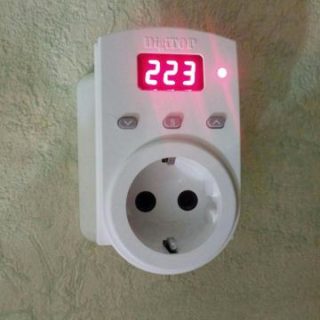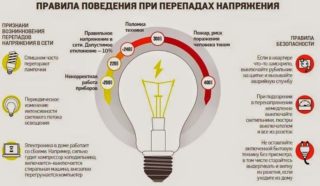One of the features of modern houses, summer cottages and cottages is the presence of a large number of electrical appliances. Products differ in power and size, but they have one thing in common - they are all designed for certain parameters of the consumed energy. In case of significant deviations, the equipment may stop working and even break down. To prevent damage to expensive devices, a voltage stabilizer is used in the outlet - an inexpensive but effective device.
Feasibility of using a stabilizer

With a critical change in the indicators of energy entering the building, household appliances can turn off, break down in whole or in part. Power surges are not uncommon. They are caused by human factors, wear and tear or breakdown of electrical equipment. Often, the neutral wire burns out, which leads to level skews even within the same apartment.
The influence of voltage drops on different types of household appliances:
- Devices that have compressors (refrigerator, air conditioner, freezer) cannot start and work with a low signal level. The windings of the device overheat, the enamel coating is destroyed, insulation breakdown and breakdown occurs. The compact regulator provides signal boost or line interruption. Refrigerators after an emergency shutdown start to work in 7-10 minutes.
- Devices with motors. These include mixers, coffee grinders, fans, meat grinders, microwave ovens. Most of them do not have overheating protection, which occurs when the input voltage is too high. A low signal is also dangerous, due to which the motor stops or burns out.
- Electronically controlled products. They contain chips with a certain operating current range. If you deviate up or down, the correctness of work is violated. This leads to the shutdown and failure of installed programs. The stabilizer in the outlet can eliminate this.
- Heating elements. These are kettles, stoves, ovens, heaters. They can fail in the case of prolonged operation at increased voltage. The elements are unable to remove excess heat, which leads to their combustion. Low current level does not affect them.
The use of even small and inexpensive outlet voltage stabilizers will avoid many unplanned expenses for repairs and the purchase of new equipment, instead of damaged due to power surges.
Stabilizer selection

When choosing point stabilizers, you should consider a number of the following factors, based on which priorities are built:
- The number of electricity consumers who need protection against power surges. If they will be in every room, it is advisable to install one powerful entrance machine.
- The strength and voltage that flows into the property. There are devices that operate on 220 V and 380 V.
- Current type. Products can be designed for one or three phases. This determines the configuration, the number of connectors and plugs.
- Availability of grounding. This indicator determines the model of the product - it will be a built-in stabilizer outlet or an external inverter device.

Since single-phase current flows into apartment buildings and there is no grounding, devices that correspond to this parameter should be purchased. It should be borne in mind that in most cases there is no possibility to put a separate input machine. It is advisable to purchase point voltage relays in the outlet, installed where devices that need protection are connected.
Since almost all summer cottages are equipped with grounding, the devices should be purchased appropriate. Discharge of electricity in case of breakdown to the case will save a person's life and prolong the performance of the connected equipment. In this case, you can take low-power stabilizers designed for a load of up to 500 W for connecting video equipment, refrigeration units and kitchen appliances. Products with higher pick-up rates should be purchased for air conditioners, boilers, washing machines and dishwashers.
The best solution for a private building, if there are many powerful consumers in it, is to install an expensive but effective input stabilizer located in a common panel.
Features of the socket device

Socket stabilizers are small-sized devices characterized by low weight and attractive appearance.
They consist of the following parts:
- Electronics. In various models, it is a board with soldered parts or a microprocessor. Electronic devices measure the parameters of the incoming current, change its indicators to normal and generate commands for the mechanical parts of the device. Commands are transmitted in the form of pulses of a certain frequency in accordance with the set program.
- Mechanics. Lightweight models are equipped with springs and clamps, which break the chain when the load peaks are exceeded. Subsequent switching on occurs in automatic or manual mode, depending on the model and cost of the device.
The devices have a setting scale for the upper and lower thresholds. The range is selected based on the connected consumers. Depending on the degree of sensitivity of the equipment, the lower threshold is set at 130-200 V, and the upper one - within 230-270 V. While the voltage is within these limits, the electronics equalizes it to the required 220 V. If the set limits are exceeded, the relay turns off the power for 0.3-0.6 seconds. In most cases, this is sufficient to prevent equipment breakdown. The delay time varies from 5-600 seconds, depending on the characteristics of the connected equipment. Various models are designed to connect one or more consumers with a total power of 0.4-3.0 kW.
Differences from a conventional stabilizer
The outlet counterparts differ from ordinary household stabilizers in the following parameters:
- Compactness. The size of single models does not exceed 125 × 60 × 80 mm. The devices do not look bulky, organically fit into the interior.
- Low weight. It has no effect on the cover and socket.
- Long response time in case of overload. For stationary products, this happens 8-10 times faster.
- The impossibility of stable maintenance of the required voltage due to the lack of power transformer windings.
Most of the outlet stabilizers are effective electronic fuses with current regulation functions.









